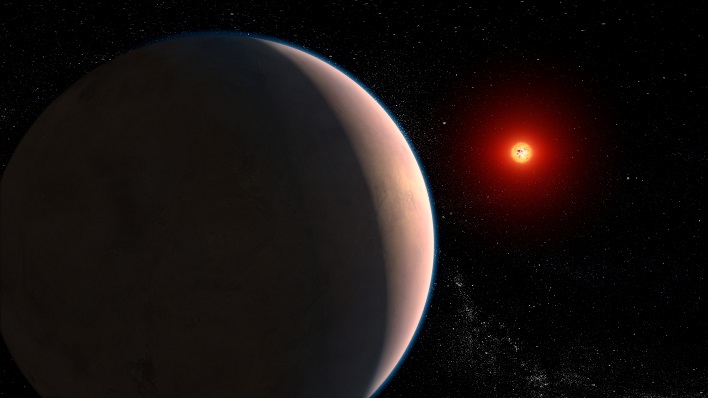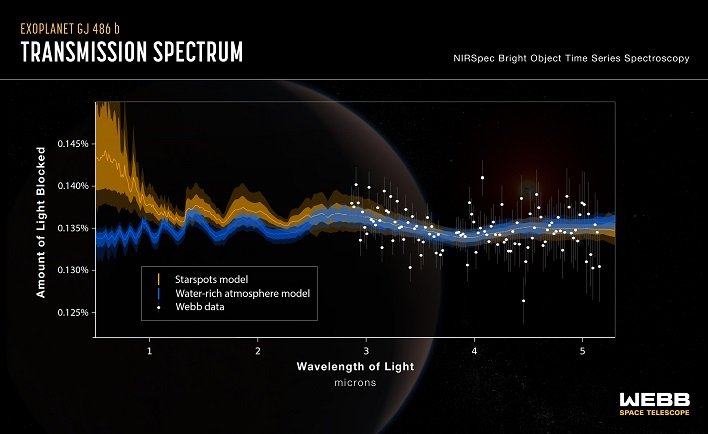NASA Baffled By Surprise JWST Discovery Of Water Vapor Around An Alien Planet

Scientists using data from JWST are attempting to answer a question in astronomy concerning red dwarf stars and whether or not a closely orbiting planet could maintain, or even reestablish, an atmosphere in the harsh environment. Exoplanet GJ 486 b is believed to be too close to its star to be within what is considered a habitable zone. However, the new data from Webb shows hints of water vapor.
"We see a signal, and it's almost certainly due to water. But we can't tell yet if that water is part of the planet's atmosphere, meaning the planet has an atmosphere, or if we're just seeing a water signature coming from the star," explained Sarah Moran of the University of Arizona in Tucson and lead author of the study.
The temperature on the surface of GJ 486 b is about 800 degrees Fahrenheit (430 degrees Celsius). If the water vapor being detected is being emitted by the planet, that would mean it has an atmosphere despite its blistering surface temperatures. The team tempers expectations of it coming from an atmosphere, saying it could be from the star itself and not from the planet at all.
"Water vapor in an atmosphere on a hot rocky planet would represent a major breakthrough for exoplanet science. But we must be careful and make sure that the star is not the culprit," remarked Kevin Stevenson of the Johns Hopkins University Applied Physics Laboratory in Laurel, Maryland, and principal investigator on the program.
The team says it did not observe any evidence of the planet crossing any starspots during the two observed transits. However, that does not mean there are not other spots elsewhere on the star which could have led to the "physical scenario" that would cause this type of water signal in the data.
NASA says that more observations are needed from JWST using its Mid-Infrared Instrument (MIRI) of GJ 486 b's day side before jumping to any conclusions. If the exoplanet has no atmosphere, then its hottest part of the day side should be directly beneath the star. If the hottest point is shifted, however, that would indicate an "atmosphere that can circulate heat."


